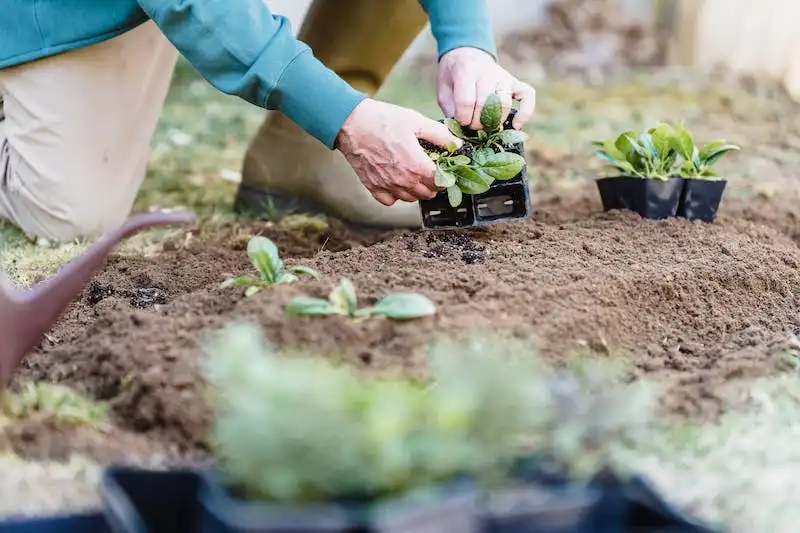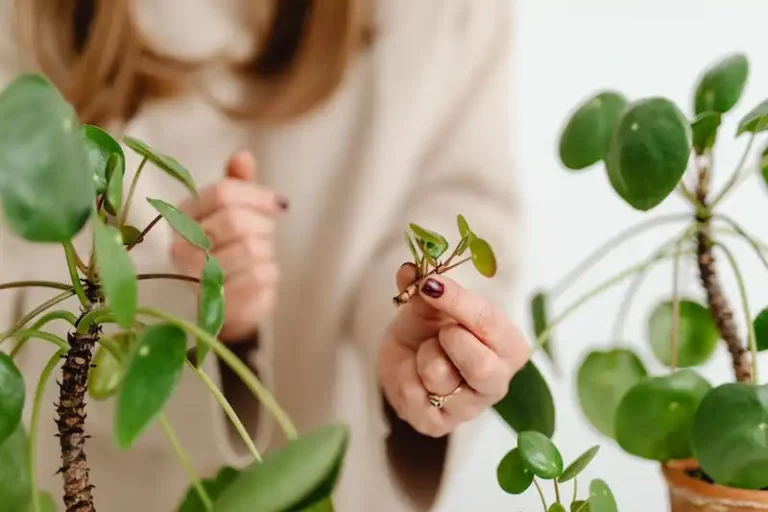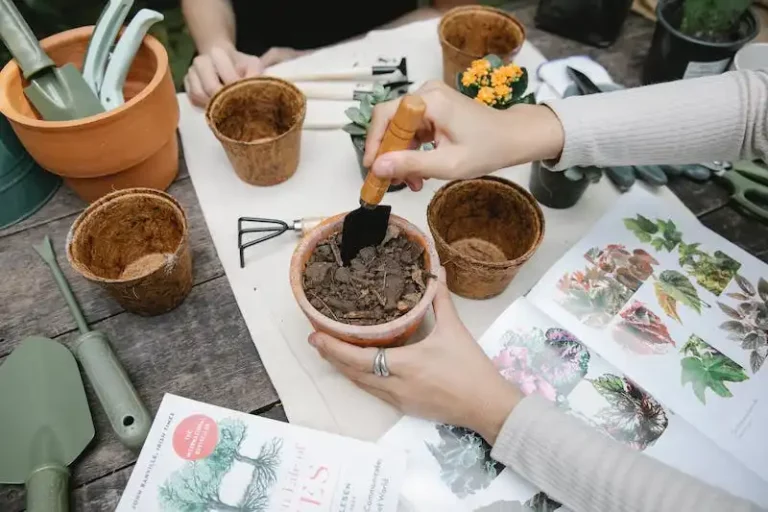Butternut squash, also known as Winter squash, is a popular vegetable that can be easily grown in the home garden. With proper care and attention, you can enjoy a bountiful harvest of delicious butterscotch-flavored squash. In this guide, we will provide you with all the information you need to successfully grow and cultivate butternut squash plants.
The first step in growing butternut squash is to choose a suitable location in your garden. Butternut squash plants require full sun and well-draining soil. It is recommended to plant them in hills or raised beds, as this allows for better soil drainage and helps prevent frost damage. If you have limited space, you can also grow butternut squash in containers.
When planting butternut squash, it is important to sow the seeds directly into the soil. Alternatively, you can start the seeds indoors about 4-6 weeks before the last frost date and transplant the seedlings once the risk of frost has passed. Each hill should have 3-5 seeds, and once the plants are about 3 inches tall, you can thin them to the strongest seedling.
Butternut squash plants require regular watering throughout the growing season. It is important to keep the soil consistently moist, but not waterlogged. Mulching around the plants can help retain moisture and suppress weeds. Be careful when watering, as wetting the leaves can increase the risk of fungal diseases. To avoid disturbing the plants, try to water at the base of the plants.
Pruning is not necessary for butternut squash plants, but some gardeners prefer to train them to grow on trellises or supports. This can help save space in the garden and allows for better air circulation and sun exposure. Pruning can also help reduce the risk of pests and diseases.
Butternut squash plants are relatively pest and disease resistant, but they can be susceptible to certain pests such as squash bugs and cucumber beetles. Insecticidal soap or organic pest control methods can be used to manage these pests. Regularly inspecting the plants for signs of pests or diseases is recommended.
Harvesting butternut squash is an exciting time in the garden. The squash should be left on the vine until the rind has hardened and developed a deep orange color. To harvest, cut the squash off the vine, leaving a few inches of stem. To cure the squash, place them in a warm and dry location for about 1-2 weeks. This will help improve their flavor and extend their storage life.
Butternut squash can be stored in a cool and dry place for several months. However, it is important to regularly inspect the squash for signs of rot or decay. To prevent mold, you can wipe the squash with a diluted bleach solution before storing.
In conclusion, growing butternut squash plants can be a great addition to your home garden. With proper care and attention, you can enjoy a bountiful harvest of delicious squash. Whether you choose to grow them in hills or containers, butternut squash plants can thrive in various environments. By following the guidelines provided in this guide, you’ll be well on your way to successfully cultivating butternut squash in your own garden.
Winter Squash
Winter squash is a secondary crop in the garden, meaning that it thrives in cooler temperatures and can be planted once the heat of summer has passed. It is a versatile plant that can be grown in the home garden, and it makes a great addition to any fall harvest.
When planting winter squash, it is important to choose a location that receives full sun. Squash plants also prefer well-drained soil, so make sure to amend your soil with organic matter before planting. Spacing is important, as squash plants tend to grow large and can easily overcrowd their neighbors. Sow your winter squash seeds about an inch deep and six inches apart in rows that are three to four feet apart.
One of the most commonly asked questions about growing winter squash is when to harvest. Winter squash takes around 90 to 120 days to mature, so make sure to give them enough time to fully develop. The rind of the squash should be hard and cannot be easily punctured with your fingernail. Once harvested, winter squash should be cured for about one week to harden the rind and improve storage life. Store your winter squash in a cool, dry place such as your kitchen or pantry. Properly stored winter squash can last several months.
Winter squash is known for its rich flavor and texture, making it a popular choice in many recipes. The flesh of winter squash is typically orange or yellow and has a sweet, nutty flavor. Some common varieties of winter squash include butternut squash, acorn squash, spaghetti squash, and pumpkin. Each variety has its own unique characteristics and flavors.
Winter squash plants require regular watering, especially during hot, dry periods. It is important to keep the soil evenly moist, but not waterlogged, to prevent root rot. Mulching around the base of the plants can help retain moisture and prevent weeds. Winter squash plants also benefit from regular feeding with a balanced organic fertilizer.
Pests can be a problem in the garden, so it is important to watch out for sucking insects and other pests that may damage your squash plants. Aphids, squash bugs, and cucumber beetles are common pests that can be controlled by manually removing them or using organic pest control methods. To prevent overcrowding, it is best to separate your winter squash plants from other plants in the garden.
Winter squash is a delicious and nutritious addition to your garden. It can be enjoyed in a variety of dishes, from soups and stews to roasted vegetables and pies. So, if you want to enjoy the rich flavors of winter squash, follow these tips to successfully grow and harvest your own.
How to Plant, Grow, Prune, Harvest, and Cure Winter Squash
When it comes to growing winter squash, nurturing the plants is key. Start by planting the seeds in well-draining spots, preferably in hills that allow for good air circulation. If you are planting butternut squash plants, consider leaving ample space between each plant, as they tend to grow quite large.
Once the plants are planted and well-established, they’ll start to develop male and female flowers. It’s important to wait for the female flowers to turn into fruits, known as butternuts, before harvesting. These fruits may appear small at first but will grow and mature as the plant continues to thrive.
As the plant grows, it is common for the vines to expand and spread all over the garden. This can be especially challenging in smaller spaces. To avoid this, you can choose to train the vines to grow in a specific direction or prune them regularly to maintain a more compact bush-like shape.
When caring for your winter squash plants, fertilizing them with a balanced fertilizer can help promote healthy growth and abundant fruit production. Be sure to follow the instructions on the fertilizer package for the best results.
One important factor to consider is the temperature. Winter squash plants prefer warm temperatures around 65-85 degrees Fahrenheit (18-29 degrees Celsius). They are more susceptible to frost damage and will wilt if exposed to freezing temperatures for an extended period.
When it comes to harvesting, it’s best to wait until the butternuts have reached their full size and have a hard rind. Use a sharp knife or pruners to cut the fruits from the vine, leaving a short stem attached. This helps them cure and store better.
After harvesting, it is important to cure the winter squash to extend their shelf life. This process involves drying the squash in a warm, well-ventilated area for a couple of weeks to allow the skin to harden and any cuts or bruises to heal.
Winter squash, including butternut squash, can be a great addition to your cooking recipes. Whether you’re making soups, stews, or roasted vegetables, their sweet and nutty flavor adds a delicious touch to your favorite dishes.
In conclusion, growing butternut squash plants requires careful nurturing, and with the right planting, pruning, and harvesting techniques, you can enjoy a bountiful harvest of these delicious winter squash varieties.
Sign up for daily gardening advice and tips
If you’re looking to start growing butternut squash plants in your home garden, sign up for daily gardening advice and tips to ensure a successful harvest.
Butternut squash plants are available in seed varieties, and they can be planted in hills or in rows in your garden. When starting your plants from seeds, you’ll need to carefully nurture them until they’re ready to be transplanted to the garden.
Once your butternut squash plants have been hardened off and are ready to be planted in the garden, choose a sunny spot with well-drained soil. The plants should be spaced about 2 to 3 feet apart to allow for adequate growth.
During the full fruiting stage, bees will play a crucial role in pollinating your butternut squash plants. Be sure to leave enough space for them to come and go freely.
Butternut squash plants require regular watering, especially during hot, dry spells. Mulching can help retain moisture in the soil and also prevent weed growth. Organic matter can be used as a mulch to nourish the plants and discourage the growth of unwanted neighbors.
As your butternut squash plants grow, you may need to provide some additional support for their heavy fruits. Using stakes or cages can prevent the stems from breaking under the weight of the developing squash.
Keep an eye out for any signs of pests or diseases, such as bacterial or fungal infections. If you notice any issues, there are troubleshooting links available to help you identify and address the problem.
Harvesting butternut squash is one of the most exciting parts of the cultivation process. Wait until the skins are completely hardened and the color turns a deep tan. Use a sharp knife to carefully cut the squash from the vines, leaving a few inches of stem attached.
After harvesting, it’s important to cure your butternut squash for long-term storage. Place them in a warm, dry area for about a week to let the skins harden and the flavors concentrate. Then, store them in a cool, dark place where they’ll be able to survive for several months.
If you’re new to growing butternut squash or want to learn more about different varieties and their flavor profiles, sign up for daily gardening advice and tips to get the most out of your kitchen garden.




